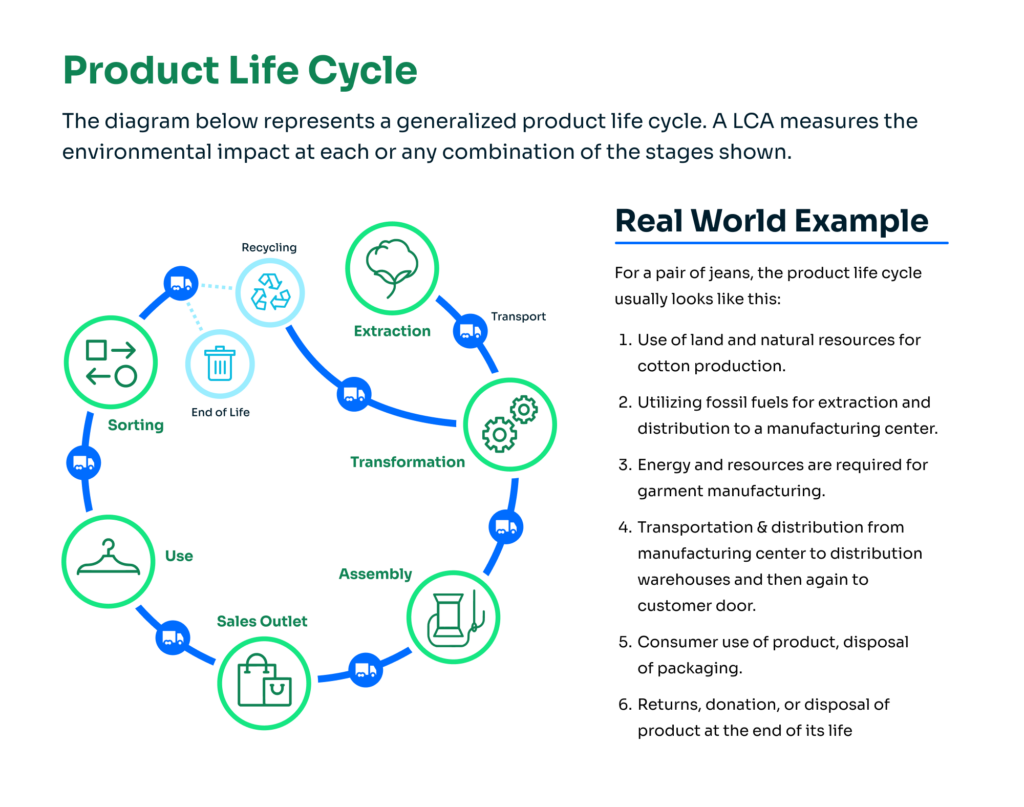A supply chain audit is an essential part of business operations. Your suppliers are part of your business, and if they operate inefficiently, have a high environmental footprint, or treat their workers poorly, that reflects on your business. By auditing and analyzing your supply chain structure, you ensure that they demonstrate your company’s values and operate at your standards.
Conducting a supply chain audit isn’t simple or easy. Luckily, we’re here to help. Here’s our guide to supplier audits, supply chain checklists, and how to administer them.
What Is A Supply Chain Audit?
A supply chain audit offers a thorough analysis of your suppliers to identify areas that can be improved. This may include things like risk management, inventory assessment, processes, social and environmental responsibility, supply chain performance, and more. Different types of audits focus on different areas of the supplier chain, depending on your company’s goals.
If a company is looking to reduce its carbon footprint, for example, it will conduct an environmental audit which will analyze the impact of its suppliers. Suppliers have a huge influence on a company’s goals and operations, so conducting a sustainability audit is essential for any ecommerce business looking to improve its operations and sustainable business practices.
Who Needs A Supply Chain Audit?
Any business with a supplier should conduct a supply chain audit. This report will help you see the current status of your supply chain management, identify risks, and reveal weaknesses. Once issues are highlighted, you can work with your supply chain to make improvements. Not only that, but also many green business certifications require a supply chain audit as part of the application process. Some certifications that either require a supply chain audit or for which a supply chain audit process may be useful are B-Corp, Cradle-to-Cradle (C2C), ISO 14001, and Fair Trade USA.
What’s In A Supply Chain Audit For Businesses?
A supply chain audit will analyze many different aspects of your supply chain to gauge efficiency, responsibility, risks, legality, and more. While a supply chain audit should always be as comprehensive as possible, the scope of the audit will be determined by the primary goals of the company. For example, if a business is looking for risk management associated with security, the scope of the audit will focus on cybersecurity threats, legality, and protection from data breaches.
Here are some key areas that the scope of a supply chain audit may cover:
- Environmental footprint: The environmental impact of your suppliers, including energy usage, carbon emissions, water consumption, waste management, and more.
- Bottlenecks: Any areas along the supply chain that are delayed or hindered due to inefficiencies.
- Legality: How the suppliers are legally protected, and whether they have taken appropriate measures to ensure that their products and materials follow the laws of the areas where you operate.
- Safety and security: The protection of your company’s and customers’ data, protection of products, insurance, and so on.
- Social impact: The social responsibility of your supply chains, including fair trade and labor.
- Pricing: Ensuring that the pricing from suppliers is fair and competitive.
- Inventory management: How products and materials are stored and handled.
Types Of Supply Chain Audits
There are many different types of supply chain audits depending on the risks and solutions that the company seeks. These include financial audits, environmental audits, compliance audits, and more. Before you choose a supply chain audit that you want to pursue, you should clearly define the goals of the audit and which actions you will take depending on the results.
Here are some common types of sustainability supply chain audits.
- Environmental audit: This will analyze the environmental footprint of your supply chain. A thorough environmental audit will cover things like product life cycle impact, carbon emissions associated with shipping and deliveries, waste generation, facility energy usage, and more.
- Fairtrade audit: This analyzes the social responsibility of your suppliers. It’s especially important if your suppliers come from historically problematic sectors, like the coffee trade or diamond trade.
- Workplace compliance audit: Similar to the Fairtrade audit, this analyzes whether your suppliers are complying with workplace laws to ensure the safety and positive treatment of its workers.
- CSR audit: This analyzes the Corporate Social Responsibility of your suppliers. This should cover both the environmental impact and the social impact of your supply chain.

Read more: Sustainability vs CSR vs ESG
How To Conduct A Supply Chain Audit
You can conduct a supply chain internal audit or through an external auditing entity. If your purpose for conducting a supply chain audit is for internal use only, then an internal audit is fine. However, if you want to use the supply chain audit to gain a green certification, or if you’re a larger business with a complicated supply chain, then you should invest in a professional auditing service. Whether you choose to do it yourself or through a verified third party, the steps of the audit will be similar.
Here are the general steps to complete a successful supply chain audit here.
- Determine the scope. Which areas will you focus on? Will you audit specific distributors or your entire supply chain? What are the supply chain risks that you’re looking to identify and mitigate? Mapping your supply chain audit ahead of time will ensure that your goals are achieved and that the process goes as smoothly as possible.
- Create a team. Conducting a supply chain audit takes a ton of work. You will need a semi-large team of people to help you collect and analyze the supply chain data to complete the supply chain audit report. Choose trustworthy, detail-oriented people who can communicate effectively and handle delicate documentation.
- Gather data. Once you’ve developed a plan and assembled your team, it’s time to gather your data. This will include things like invoices, spending sheets, contracts, materials certifications, and more. EcoCart conducts product life cycle assessments to help your business determine its environmental impact along the supply chain.
- Plan the audit and verify the data you have collected. This will require working with your suppliers to schedule interviews, settle deadlines to provide proper documentation, create a methodology to analyze the data and documentation, create checklists to ensure that you get everything, and more.
- Analyze the data and write a report. Once all of the information is gathered, it’s time to write the audit report. From the audit findings, you can identify key areas of improvement and begin working with your suppliers to apply changes and improve operations.
- Repeat. A successful supply chain audit should be a regular occurrence. This will ensure that the changes you’ve made have achieved your goals and that no new risks or issues have emerged, and it will provide a way to measure and analyze your progress.
Ecommerce Business Supply Chain Audit Checklist For Sustainability
A supply chain management checklist will ensure that you completely analyze all areas of your supply chain to help you achieve your goals. Your checklist will help keep your team on track, even with many moving parts. It serves to guide the process and keep things organized. They are usually quite extensive (as they should be) and could be over 100 questions long.
Here are some questions that may appear on a supply chain audit checklist.
- Are your suppliers following sustainable practices in their production processes?
- What is the carbon footprint of your supply chain, including transportation and logistics?
- Are the raw materials sourced ethically, and do suppliers adhere to fair labor practices?
- How do suppliers manage waste, and what are their recycling policies?
- Are energy-efficient practices in place at supplier facilities, and what steps are they taking to reduce energy consumption?
- What types of packaging materials are used, and are they environmentally friendly or recyclable?
- Are eco-friendly transportation options being utilized, such as electric or low-emission vehicles?
- How transparent is the supply chain, and is there traceability from raw materials to finished products?
- How are environmental risks managed within the supply chain?
- Are there opportunities to source materials locally to reduce transportation emissions?
- Does the supply chain include a diverse range of suppliers, including small and local businesses?
- Have you conducted a lifecycle analysis of your products to understand their environmental impact from production to disposal?
- Are all suppliers compliant with environmental regulations and standards?
- Is renewable energy being used in any part of the supply chain?
- How is water used in the supply chain, and what conservation measures are in place?
- Are efforts being made to educate consumers about the sustainability of products and practices?
- Are there systems in place for receiving feedback from stakeholders on supply chain sustainability?
- Is there a plan for continuous improvement in sustainability practices within the supply chain?
- How resilient is the supply chain to environmental changes and challenges?
- Are there collaborations or partnerships with other organizations or NGOs for improving sustainability in the supply chain?
Your supply chain audit checklist should be prepared by a supply chain audit professional. Often, companies invest in sustainability management software, like EcoCart, that will guide their processes, organize their data, and help them create a report once the information is gathered. For additional help, you can also check out our ecommerce sustainability scorecard.

Want to know where your business stands? Get your sustainability scorecard with our quiz:
How To Build A Sustainable Supply Chain
Sustainable supply chain management is essential. You can’t claim to be a sustainable ecommerce company if your suppliers aren’t sustainable. As much as 90% of a company’s carbon emissions are Scope 3—emissions from outside of the organization’s operations. Companies seeking carbon neutrality need to create a sustainable supply chain.
First, you must identify problem areas using a supply chain audit. Then, focus on the biggest areas of impact and strategize ways that you can minimize them. Encourage the switch to eco-friendly packaging, support sustainable shipping practices, promote renewable energy, and more. This will require engaging your supply chains and leading sustainability initiatives that help them pursue more sustainable practices.
Work with your suppliers to come up with some sustainability KPIs that they can hit. Use tools like EcoCart’s carbon emissions dashboard to keep track of emissions throughout the supply chain. If your supply chains are unable or unwilling to make the necessary changes, you may need to switch to a supplier that will.
Read more: 8 Steps to Developing a Sustainability Program
Conclusion
A supply chain audit is essential to gaining green certifications, identifying and mitigating risks, and minimizing the environmental footprint associated with your suppliers. They are a necessary part of business that must happen regularly so that you can achieve your sustainability goals.
Decarbonizing your supply chain is a notoriously difficult task. EcoCart provides sustainable solutions for ecommerce businesses, especially when it comes to shipping and transport. If you’re ready to learn more, reach out to our team for a demo today.



